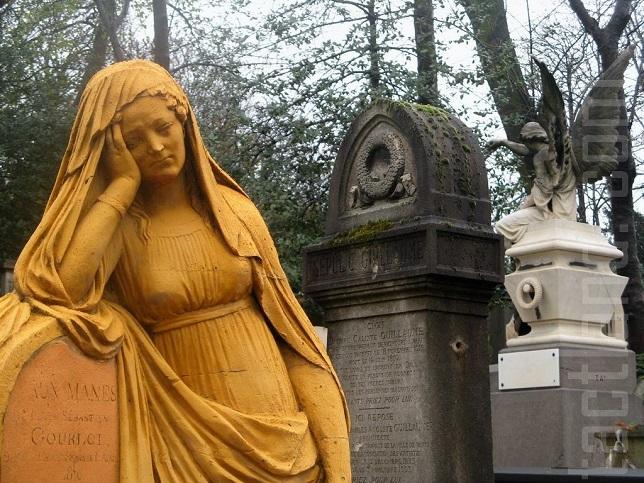Last Updated on 17 January 2018 by TT
Paris is worth to spend your valuale time in terms of non tourist attractions as well. Beyond the Eiffel Tower and the Louvre Museum, the French capital hides more stories and landscapes to discover. If this is your second or third visit to Paris, this page is just to remind you that you have many interesting non touristy attractions in Paris;
1- Cementerio del Père Lachaise
Location & Entrance: 16 rue du Repos 75020 Paris. Metro Père Lachaise. Opening Hours: From November 6 to March 15, 08:00-17:00 from Monday to Friday and 08.30-17.30 on Saturdays and 09.00-17.30 on Sundays and public holidays. From March 16 to November 5 08:00-18:00 from Monday to Friday. 08:30-18:00 an Saturdays and 09:00-18:00 on Sundays and holidays. Entrance Fee: Free admission
The Eastern cemetery, commonly called Père Lachaise, is the most visited necropolis in Paris and some claim that receives more than two million visitors a year. In terms of the number of visitors this interesting cemetery is only surpasses by Cathedral de Notre-Dame, Louvre Museum and Eiffel Tower. Interestingly, when the cemetery opened its doors in 1804, the Parisians were very reluctant to bury their relatives at this place. In 1815, there were only 2,000 tombs. But now, the number is about 70,000 including many famous people and making it the largest cemetery in Paris (44 hectares). Among the celebrities who are buried in this holy field are; Honorato de Balzac, Guillaume Apollinaire, Frédéric Chopin, Jean-François Champollion, Jean de La Fontaine, Molière, Yves Montand, Simone Signoret, Jim Morrison, Alfred de Musset, Edith Piaf, Camille Pissarro, Oscar Wilde and Jim Morrison.
2- Chateau Vincennes
Location & Entrance: Avenue de Paris 94300 Vincennes. Metro Chateau de Vincennes. Opening Hours: 10-17 h (from September 23 to May 20) and 10-18 h (from May 21 to September 22. Entrance Fee: 8.50 euros.
Located on the east of Paris, the Château de Vincennes is the largest royal fortified castle of France and also one of the best preserved in Europe. It was built between the fourteenth and seventeenth centuries and it is striking to see
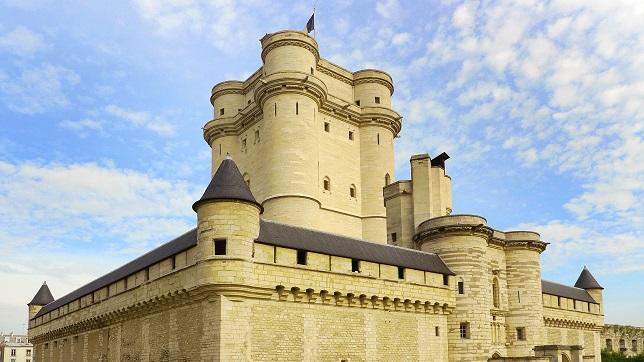
it through its high tower (52 meters). This authentic fortified citadel consists of long enclosure walls, flanked by three gates and six towers which are 42 meters high. The tower of homage was designed to be the residence of the king of France in case of immediate danger, because it was protected by wide moats, a small fort and two drawbridges, but was relegated as a royal residence when Louis XIV settled at Versailles on May 6, 1682. The great tower of the homage of Vincennes then became a state prison for highborn prisoners.
3- Molino de Montparnasse
Location & Entrance: 3, boulevard Edouard Quinet 75014 Paris. Metro Edgar Quinet or Raspall. Opening hours: The interior of the mill is not visited, but the Paris City Council may organize two-hour guided tour by calling +33 (0) 1 71 28 50 82. The mill’s visiting hours coincide with those of the cemetery: 8-18h (Monday to Friday); 8.30-18h (Saturdays) and 9-18h (Sundays and public holidays).
In the center of Paris, inside the Montparnasse cemetery, there are not only the tombs of very famous people from France and the whole world (Jean-Paul Sartre, Charles de Baudelier, Jean Seberg, André Citroén, Julio Cortázar…)
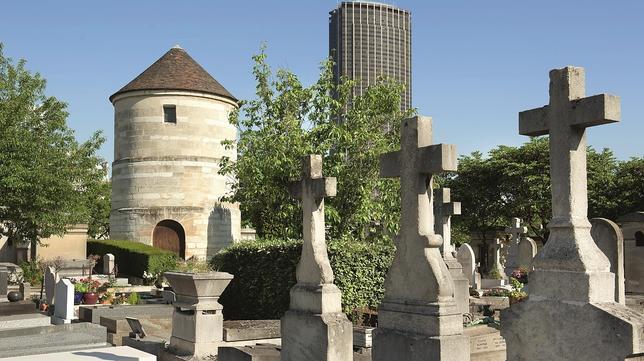
Visitors are surprised by the presence of an authentic 17th century mill, since before the cemetry was founded the land was by farms. Some of these parcels were belonged to the Brothers Charity, who built the mill in the west part and named it “le Caridad”. Today we see the mill without the blades, surrounded by graves in the middle of a cemetery where 1,200 trees grow: maples, ash trees, linden, conifers etc. Since its opening in 1824, 300,000 people have been buried in Montparnasse Cemetry, but today there are only 35,000 graves and around a thousand people are buried here each year.
4- Cripta de Nôtre-Dame
Location & Entrance: 7 Parvis de Notre-Dame – Place Jean-Paul II 75004 Paris. Metro Cité. Opening hours: 10-18 h (except on Mondays that remain closed). Entrance fee: 4 euros (crypt and exhibition). Free under 14 years.
Established in 1980 under the atrium of the Cathedral of Notre-Dame on the Ile de la Cité, the crypt of the magnificent Gothic temple shows the archaeological remains discovered in the excavations carried out between 1965
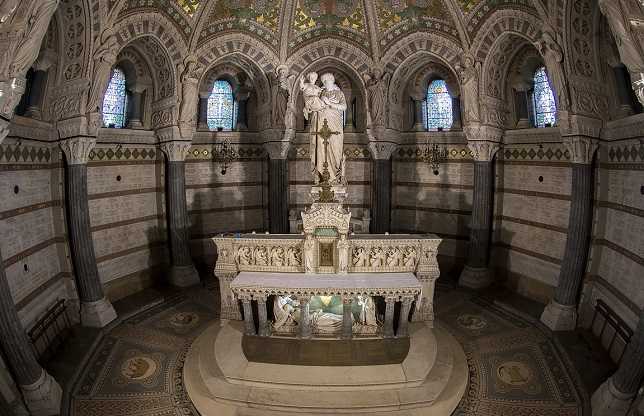
and 1972. The visitor goes back in time and can stroll through the ancient ruins among the medieval and classic remains which were placed here during the construction of the church. In a word, you will see the 2,000 years old architectural evolution of Island Of Cite (that captures the urban and architectural evolution of the Île de la Cité (Island of the Cité) which was the core of Paris. The crypt, which is considered as the most important in Europe, has a length of 117 meters long and 28 meters wide.
5- Photo Studio Harcourt Paris
Location: 10 Rue Jean Goujon, 75008 Paris. Metro Champs-Élysées – Clemenceau. Telephone: +33 (0) 1 42 56 67 67
Created in 1934 by the brothers Lacroix and Robert Ricci, the Harcourt Studio Paris quickly became an indispensable place in Paris where writers, painters, singers, sportsmen and actors passed by. Famous celebrities such as Marlene Dietrich, Salvador Dalí, Brigitte Bardot, Carole Bouquet, Zinedine Zidane and John Gallian have posed at this Harcourt Photographic Studio, located in the center of Paris. The study proposes other activities to visitors, such as taking photograph with some celebrities or portraying in the center of a work of art.
6- Viaducto de las Artes
Location: Daumesnel. Avenue 12th arrondissement. Metro: Arrét, Bastille and Gare de Lyon. Open during hours.
The arches of the viaduct of the old railway linking the Bastille with the Bois de Vincennes, now no longer operational and have been occupied by antiquarians, cafes, craft and design shops with glazed surfaces
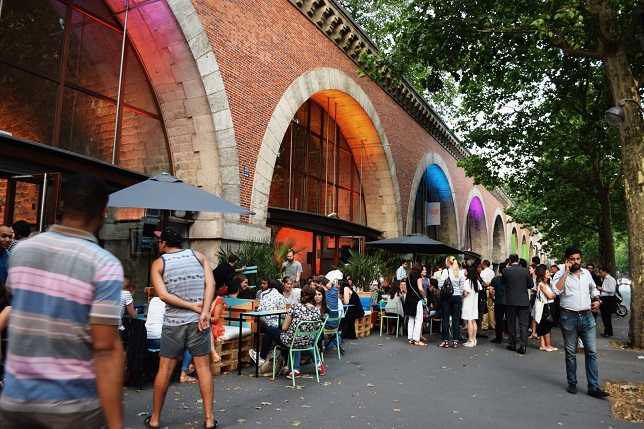
that have given a new air to this neighborhood. Many young artists have also settled on this Viaduct of the Arts that will surprise shoppers (there are more than fifty shops), not only because of the lively cafes, bars and businesses here but also because above the arches a four kilometers long, garden-promenade “Promenade Plantée” is to enjoy here.
7- The Floral Park of Paris
Location & Entrance: Esplanade du château de Vincennes – Route de la Pyramide, 75012 Paris. Visiting Hours: 9.30-18.30 h (winter) and 9.30-20 h (summer). Entrance Fee: 5.50 euros. On Wednesdays, Saturdays and Sundays between June 6 and September 21 entrance fee applied. Access to the park is free for the rest of the year.
Parc Floral de Paris is a unique place to enjoy and to have a rest where is surrounded by plants and flowers in the center of the Bois de Vincennes, very close to the castle of the same name. The Floral Park of Paris, completed in 1969, occupies 28 hectares and forms part of the Botanical Garden of the French capital, next to the other gardens of
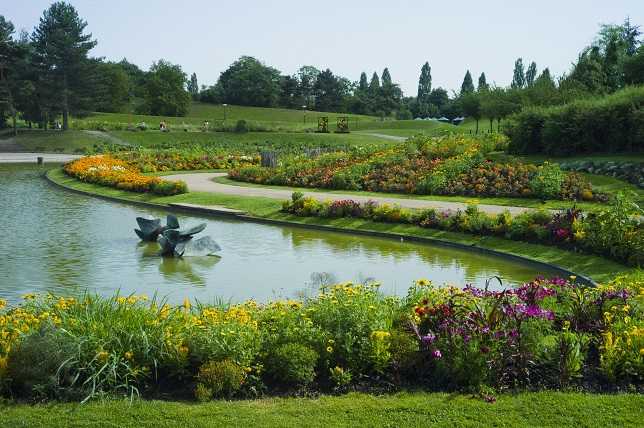
“Greenhouses of Auteuil”, “Parc de Bagatelle”, the “Arboretum of the School of Breuil” and “Bois de Boulogne”. The park is decorated in the style of the Japanese, has a space of sculptures and shows a unique collection of over six hundred different irises. As for the services of the venue, there are two restaurants, an entertainment space, a theater, a puppet show theatre and a large play area for children.
8- The Catacombs
Location & Entrance: 1, avenue du Colonel Henri Rol-Tanguy (place Denfert-Rochereau) 75014 Paris Metro Denfert – Rochereau. Telephone: 01 43 22 47 63. Information and reservations: 01.44.59.58.31. Visiting Hours: 10-17 h (from Tuesday to Sunday). Price: 3 euros. There are audio guides in French, English and Spanish.
In 1785 the French Council of State decided to move the Holy Cemetery of the Innocents (Cemetry de Les Innocents) which had become a source of infection, to old quarries of limestone where a well was dug to deposit the bones and the remains of the corpses.
Paris Catacombs Skip-the-Line Ticket
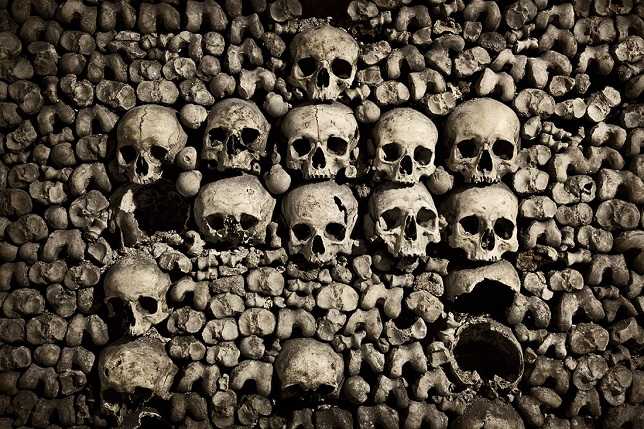
The blessing and the consecration of these remains occurred between 1786 and 1788 and from that moment it became the municipal ossuary of all the cemeteries Parisian. Even the emperor Napoleon III visited the place with his son in 1860. At present day anyone can do this visit since the catacoms opened to the public in 2005, although only a minimal part of the 300 kilometers of tunnels and passages can be seen. It is estimated that more than six million bodies may be buried in this place. This may be a chilling visit when you see bones and skulls piled up.
9- The Paradise of Chocolate
Location & Entrance: 28 boulevard de Bonne Nouvelle 75010 Paris. Metro Bonne Nouvelle. Visiting Hours: 10-18 h. Ticket Price: 9 euros
With more than a thousand pieces of collection, this is a paradise of the cacao addicts. The Choco-Story Museum, which is distributed in three levels (850 square meters), reveals the secrets of the more than four thousand years of history of this delicacy that the Aztecs already venerated. There are, of course, tastings and workshops to make chocolate comparing, for example, the fruity flavors of Peru’s cacao and like the testing the aromas of Venezuela’s cacao. And at the final, a real temptation for chocolate lovers waiting at the gift shop.
10- The Tropical Aquarium
Location & Entrance: Palais de la Porte Dorée – 293 avenue Daumesnil 75012 Paris. Metro Porte Dorée. Hours: 10-17.15 h (Tuesday and Friday) and 10-19 h (Saturdays and Sundays). Closed Monday. Ticket Price: 4,50 euros.
If you wanna feel yourself in the warm waters of tropical lands you have a surprising option in the Aquarium of the Palace of the Portée of Paris (Aquarium Tropical du Palais de la Porte Dorée). The site, opened in 1931 on the occasion of the International Colonial Exhibition and houses 5,000 animals of 300 different species. From the primitive fishes of Africa and South American crocodiles, sharks and piranhas. At the beginning the aquarium was planned to show the aquatic fauna of the overseas territories, but after 1985, the place is reorganized with much more speices. Do not miss the “museum of fossils” where specimens of species that exist on the planet for 300 million years, the aquarium of extremophile fishes such as cichlids that put nine million eggs, a cephalopod mollusk called the Nautilus Of The Pacific and the limula or horseshoe crab, one of the oldest living creatures on the planet.
